Catching Largemouth Bass With Shiners
Here is a nice 6 lb. Largemouth I caught live-lining a shiner early in the morning in Vermont.
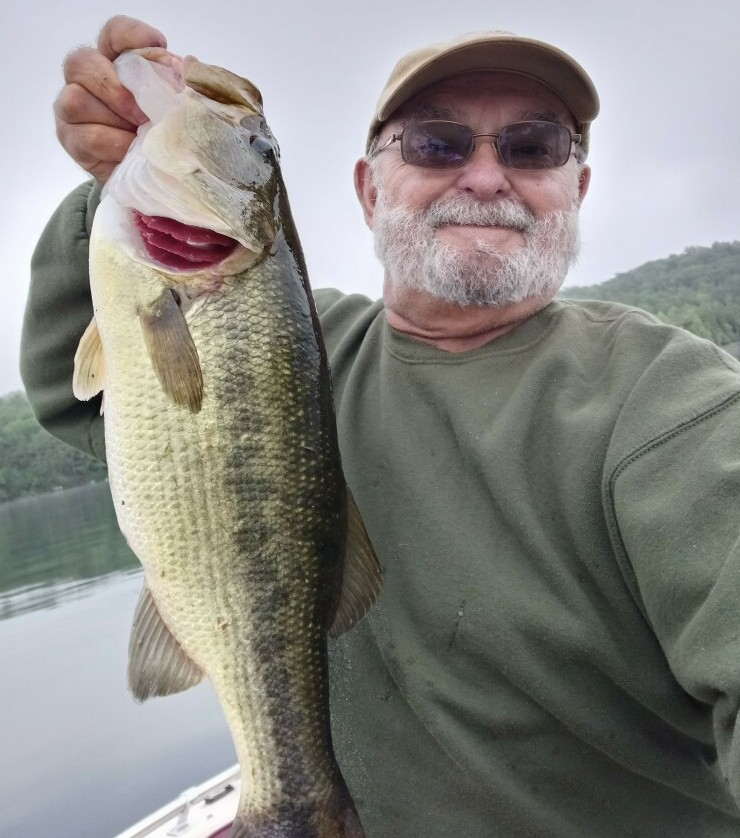
Note: To all my southern bass fishing friends, this Bass was caught in Vermont, Yes I know that down south, especially in Florida, Largemouth grow to 10 lb. plus sizes. That is a combination of warmer weather and the fact that they are a different species of bass. From the Florida Fish and Wildlife Commission, “As of July 2024, the American Fisheries Society has recognized Florida bass as a distinct species from largemouth bass.” Florida-strain trophy largemouth bass must be 8-pounds to be considered a trophy. Whereas the State of Vermont classifies a 20 inch 5 lb. Largemouth a trophy.
Shallow Water Fishing
I’m here to help you understand why live shiners are often hailed as the best bait for bass. For one thing the diet of Largemouth Bass consists of live bait. When the bass are actively feeding, the sight of a fleeing minnow sparks the natural hunting instinct and they will attack with a vengeance. Their natural movement and the scent they emit create an irresistible combination, rendering them the ultimate temptation for bass, particularly the largemouth variety.
It is most important to allow a live bait to look and act as normal as possible. The trophy size fish we are seeking are wary of anything that looks strange or different. It’s not just dangling them on a hook; it’s about making the presentation as lifelike as possible. This includes the type of hook you use and how you thread the shiner onto it, as well as knowing the right places to cast your line.
You have probably noticed that many artificial lures are designed to resemble Shiners or other Bait fish that Largemouth Bass crave. Here is a picture of some lures like that.
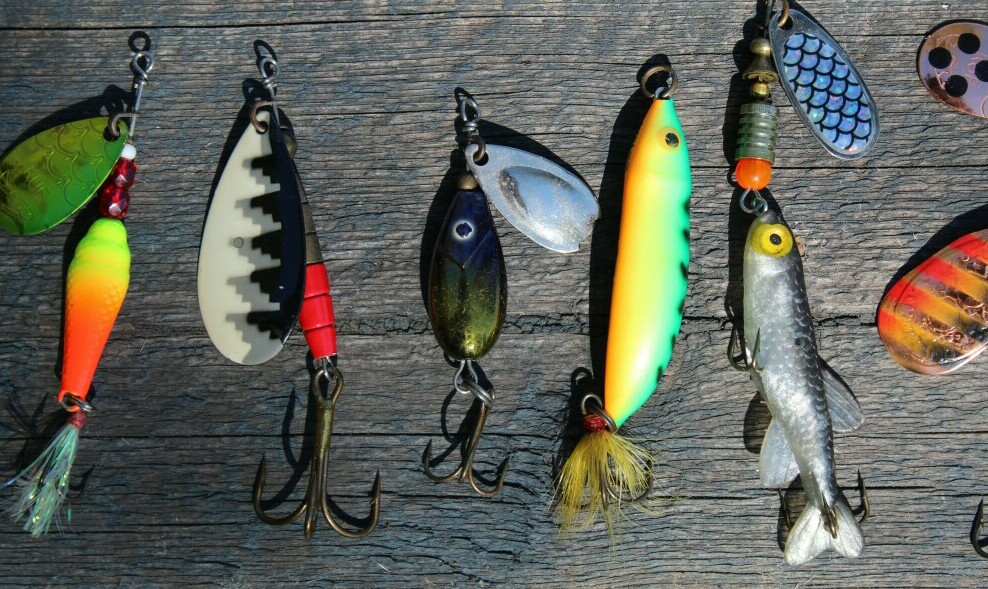
We will explore lure fishing in other articles. Lures also must be presented in a proper manner to elicit strikes from large fish. Under certain conditions they will prove to be more effective than live bait. One advantage they have is the ability to quickly cover a lot of water. However, it is still important to know how to predict the location of feeding fish on any given day. That is an essential skill which is sometimes overlooked. Fishing in a “dead zone” will not produce fish, no matter what type of bait is used.
The look, action and scent of a real shiner will coax the large smart fish into biting. Yes I said “smart”. Many anglers believe that fish are stupid and will bite anything that remotely resembles the live food. That’s the reason they usually catch the smaller bass, 1 to 2 lbs. The bigger Largemouth Bass have been around a long time and have learned to be careful with what they choose to eat. Thus, presenting them with real food in a “realistic” manner will coax the hogs, over 5 pounds, to bite.
I prefer to use the lightest tackle without any weight when I’m fishing in shallow water by a weed bed, early in the morning. A 3 or 4 inch shiner hooked through the mouth from the bottom of the jaw and up through both lips is my preferred rigging.
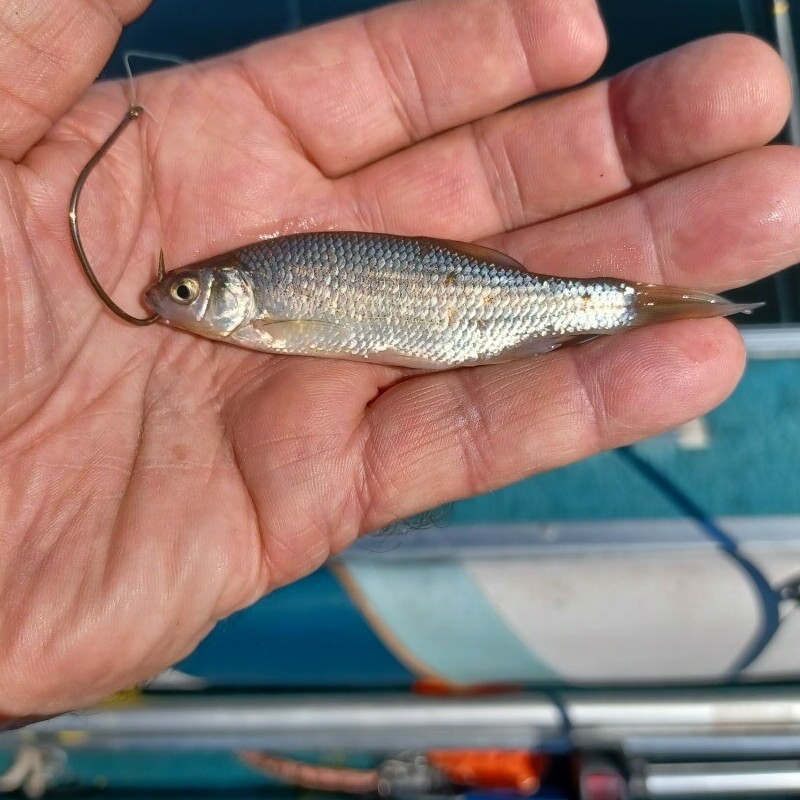
A “live-line” setup like this is ideal for shallow presentation, as it allows the bait to swim normally and try to escape the predators. This may lead to a reaction strike where the feeding Largemouth cant resist the “chase”, much like a cat stalking a mouse. Because of the presence of the hook, the shiner will appear somewhat disabled and may be singled out for capture. Fat hog Bass love an easy meal when presented with one. The other advantage of this rigging method, is that when retrieving the bait back to the boat, or if there is a current, it will appear to be swimming naturally. I have had many strikes from following bass as the bait approached the boat.
A variation of the lip hooked method is top hooked behind the head as in this picture.
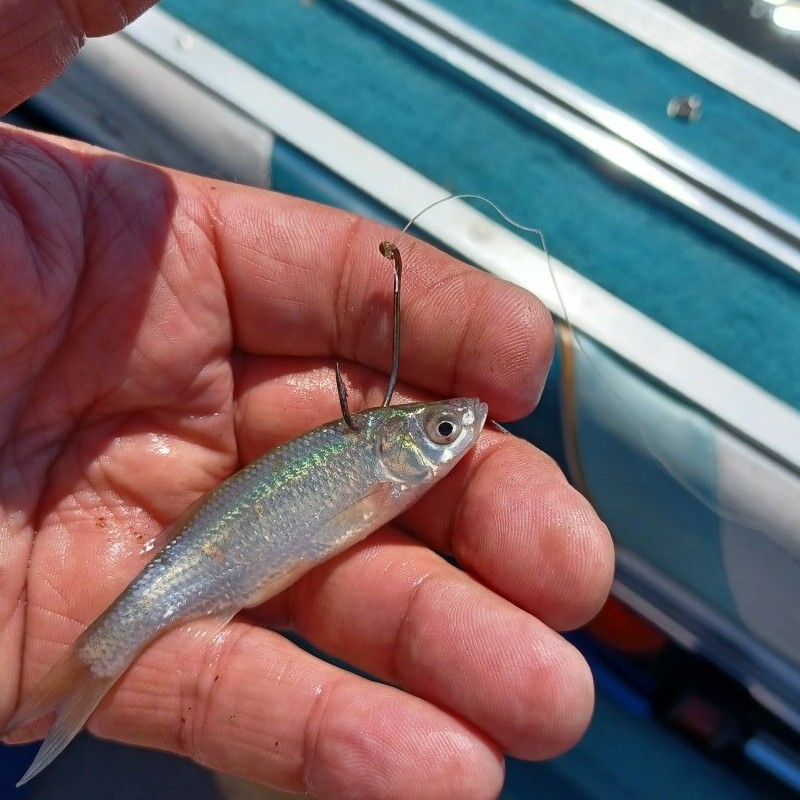
This hooking method can produce similar results such as the shiner swimming upright when being slowly retrieved. It also works well if the bait’s lips are fragile and the hook will tear out too easily, for example, while casting.
Since we are talking about rigging methods for live shiners, I will include one method used for salt water baitfish such as Pilchards (Whitebait) or Greenbacks. Their skin is soft on the mouth and the back. Many guides hook them through the eye sockets, just above the eyeball, to allow secure long distance casting. Here is an example.
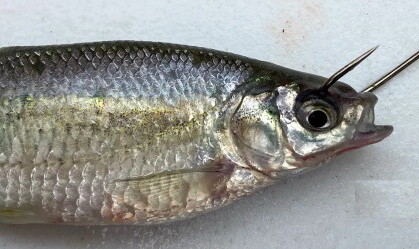
A number 2 or 4 size hook attached to 8 lb. test monofilament line will be sufficient. This will allow the shiner to be cast the farthest distance and it will be able to swim freely near the top of the water. I have had very good luck with this presentation, catching 5 to 7 lb. bass. Note that with this light line you will not spook the fish, but you should be ready to pull the bass away from the weeds as soon as it strikes, Allowing the fish to reach the weeds increases it’s odd of getting away.
Many Bass fishermen will opt for heavier tackle. While I consider it less sporting, because the fish can then just be hauled in like a piece of dead meat, the heavier line may be necessary in heavily weeded area. This is especially true when fishing tough vegetation like lily pads, near structure like docks or trees, and in Southern marshes.
Deep Water Fishing
While most of the bass lakes in the deep South are shallow and covered with tough weeds and lily pads, many of the lakes farther north, especially in hilly or mountainous areas, are deeper and clearer. In this case, if you want to get the shiner down farther, where bass might be chasing schooling bait, it become necessary to use weights. I have caught Largemouth that were 40 feet down following schools of Smelt in a deep Vermont lake. But, once again, for trophy fish you will want to use the lightest weight necessary. I tend to use the small round weights called split-shot.
Here is what they look like, in a handy container and a closeup view.
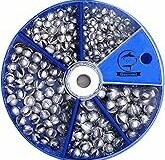
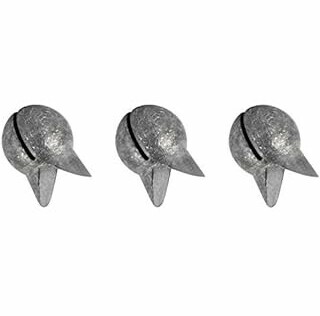
Split shots are very convenient. Split shots are usually crimped to the line with a pair of pliers. The ones shown in the picture above have “ears” that protrude from the round body. These are used to open the “jaws” of the weight so that it can be crimped to the line or conversely removed from the line. They come in a variety of sizes which can be chosen to determine the depth at which you wish to Fish. You can also use several weights of the same size on the line to increase the weight by adding some or decrease as necessary by removing some.
There are split shots designed without the ears and are completely round. These are used sometimes when drifting so that they don’t spin in the current and twist the line.
In water deeper than 15 feet, you may want to use a drop shot technique. Here is a simple picture that shows the concept.
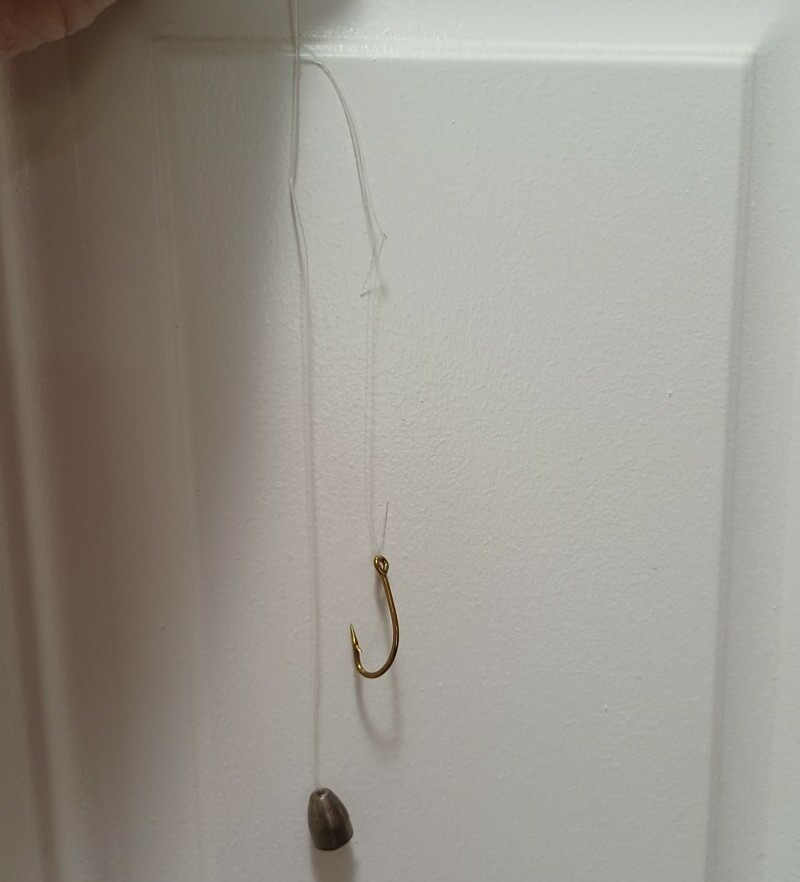
The main line has a weight, anywhere from 1/2 oz. to 3 oz., on the bottom end. Then a hook is tied anywhere from a few inches to a few feet above the weight. This allows the bait to dangle above the weight, and above the bottom of the lake, pond or bay. I like to use a hook with a leader to allow any attached bait to swim away from the main line. This will also make it easier for a larger fish to suck the entire bait and hook into its mouth.
Summary
This has been an overview of techniques used when fishing for Largemouth Bass with Live Shiners. These rigging methods of course will work when targeting other types of fish. When you rig a shiner on a drop-shot and send it to the bottom of a lake, or even a saltwater bay, you never know what might grab your bait and run with it.
Tight Lines to you all. See you in the next article,
